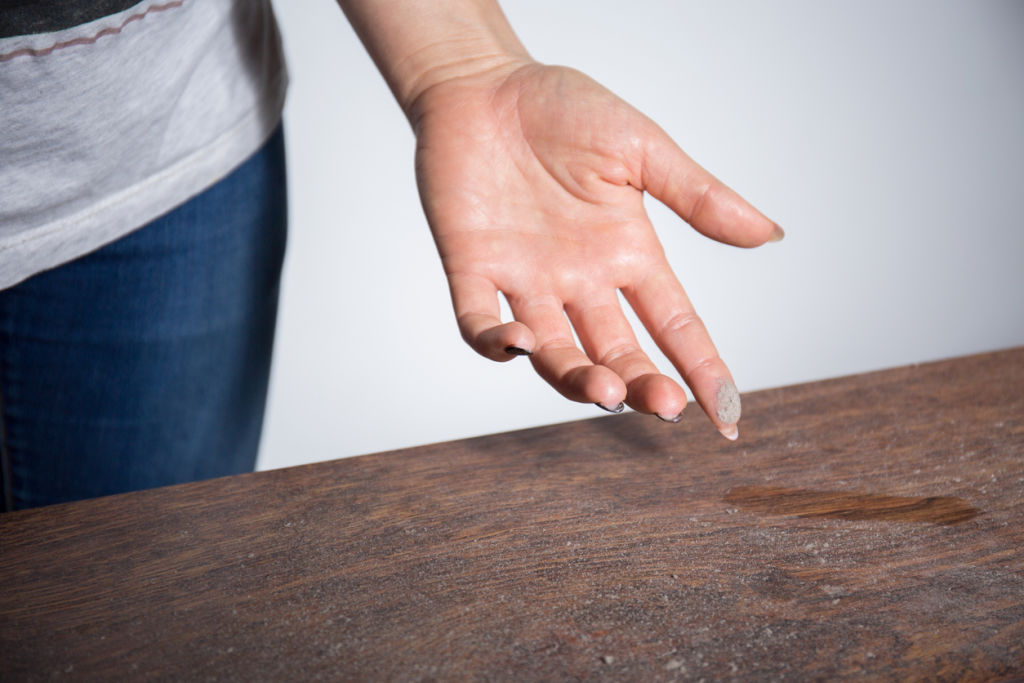The best ways to get rid of dust in your home

Dust. Even the most fastidious cleaners can’t escape it. That annoying layer of greyish brown filth settles on every surface, finds its way into every nook and cranny, and reappears with monotonous regularity.
With the majority of us spending up to 90 per cent of our lives indoors, we are breathing in dust constantly. So where does this filth come from and what does it actually contain?
Mark Taylor, from the School of Earth and Environmental Science at Macquarie University and Victoria’s new chief environmental officer, spends a lot of time studying the components of dust. He is part of a global research initiative – the 360 Dust Analysis – which aims to obtain baseline data on harmful chemicals in regular dust from households around the world.
According to Professor Taylor, dust is a concoction of all sorts of dubious compounds, some of which originate from pet dander (skin flakes), as well as from our own bodies, such as hair and sloughed-off skin cells. The rest is made up of microscopic airborne compounds that exist all around us, together with the outside debris we track indoors on the soles of our shoes, such as soil particles and remnants of dead insects.

As if these nasties are not enough to prompt you to reach for a dust cloth, did you know another key component in dust is animal faeces?
According to Professor Taylor, 96 per cent of all shoes that walk through a house contain faeces. The majority of this is probably from dogs but may also include the faeces of other animals, such as possums. Once this organic matter enters your home, over time it breaks down and is converted into dust.
Each time this dust is disturbed it gets re-suspended and recirculates throughout the house, picking up more of these nasty substances, before returning back to the floor, in a never-ending cycle.

Along with the environmental contaminants we track indoors, household dust has been found to retain up to 100 chemical pollutants, such as lead and microscopic specks of plastics, many of which are considered toxic to humans.
Of particular concern are the relatively high levels of potentially carcinogenic microplastics found in household dust samples. These compounds are derived from petrochemicals, and, when broken down into tiny particles, settle in the dust around the home. Inhalation and ingestion rates of these microplastic particles were found to be greater in children under the age of six.
As there is still no definitive data on safe exposure levels to these pollutants, Professor Taylor’s advice is simple, “whatever you can do to reduce dust in your home makes sense”.
Tips for reducing dust in the home

Unfortunately, dust is something we have to live with, however, there are certain steps you can take to reduce the amount that builds up in your home.
- One of the simplest and most effective things you can do is adopt a no-shoes indoors policy.
- Choose hard surface floors in preference to carpets. Carpet tends to hold on to fine particles and can be a haven for dust mites. It’s also harder to clean carpets thoroughly and get rid of all the contaminants. With hard floors, the dust is easier to see and clean with a wet mop.
- Choose a vacuum cleaner with a HEPA (high-efficiency particulate air) filter. This filter can theoretically remove at least 99.9 per cent of any airborne particles.
- When dusting your home, work with gravity and clean from top to bottom so the dust is effectively “pushed” down, and finish off by either vacuuming or mopping the floors.
- Forget dry dusting, which simply re-distributes the dust. The most effective way to capture dust is with a soft cloth, dampened with water, followed by a polish with a dry microfibre cloth. Domestic cleaning guru Shannon Lush also recommends a kitchen broom covered in pantyhose for dusting down large surfaces.
- One of the biggest sources of household dust, in particular dust mites and other allergens, is your bed. Having your mattress professionally steam cleaned at least once a year is recommended.
- Regularly check the filter in your air conditioning unit for dust build-up, and clean it if necessary. When working effectively, your air conditioner will trap any particles in the air coming from outside.
We thought you might like
States
Capital Cities
Capital Cities - Rentals
Popular Areas
Allhomes
More










